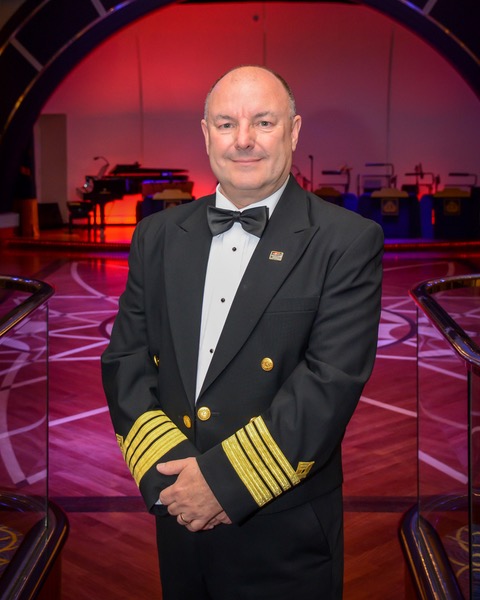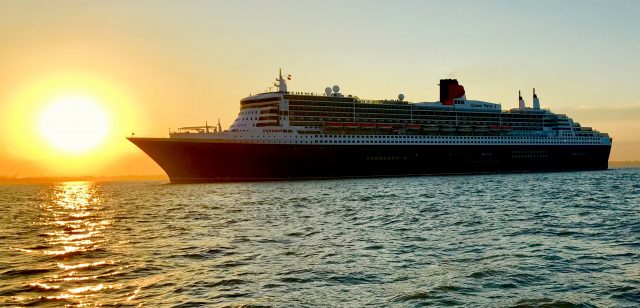Manoeuvres in Port!
2018-12-12Hello everyone and firstly let me say that one of the questions I am most often asked is “just how do you berth a huge ship like Queen Mary 2 alongside the pier so gently each time?!”
Well for me, it has always been a source of immense satisfaction every time a berthing operation at one of our numerous ports of call went exactly to plan. I originally went to sea as a young lad to drive ships and it was always the best part of the job for me.
So it may be interesting for me to run through a typical arrival into port and where better to describe than the port of New York, Queen Mary 2’s second home?
Typically we would plan to arrive at what is known as the harbor pilot boarding area at the coastal waters outside New York harbor at around 3.30am in the early hours of the morning. The Harbor Pilot would board the ship from his pilot boat and then be escorted to the Navigating Bridge where we would meet and exchange all the pertinent information about the ship and her equipment and confirm that we had already tested everything and were ready to enter the harbor.
The job of the harbor pilot is to advise the Captain and his Bridge Team and contrary to some people’s idea, he or she never takes over command of the vessel from the Captain. A pilot through history has always been in the role of expert advisor using their wealth of local knowledge.
He or she would then assist our safe passage through the special deep water channels marked by navigational buoys, which of course float, but which are also attached to the sea bed so that they remain in their designated positions. In the case of New York, these deep water channels bring the ship in under the Verrazano Narrows Bridge, which is always exciting to watch for the early bird guests who have made it out onto the open decks to watch our early morning arrival. It’s even more exciting as Queen Mary 2 was specially designed to only just fit under the Verrazano Bridge at any state of the tide and the top of the funnel is only sometimes 25 feet below the deck of the Bridge!
After that the famous Statue of Liberty is the next landmark to come into view almost dead ahead as we enter the Harbor. This is the sight that millions of immigrants to America first saw as they finally reached the country that was to be their new home! It is still to this day an emotional sight to see.
Queen Mary 2 then turns to starboard (to the right in other words) towards the Brooklyn Cruise Terminal and it is at that point that I as Captain “took the conn” from the pilot and started up the three powerful bow thrusters which assist the ship to manoeuvre in harbor, in conjunction with the main propellers.
To berth in Brooklyn the ship had to be turned 180 degrees around in an area of deep water just south of the berth itself. Whilst making this manoeuvre, due consideration had always to be taken of which way the strong tides in New York were running at that time – either ebbing (the water going out) or flooding (the water going in) as even a ship of QM2’s size can be carried along by the tide. The main engines were used to counteract any unwanted drift due to the tide.
Once turned, it was a case of manoeuvring the ship astern (coming backwards or reversing) towards the berth and most importantly, making sure the ship was parallel to the berth itself before slowly inching the ship sideways using the propellers and bow thrusters until she gently touched the huge rubber fenders against which she would lean once the mooring ropes were fed out and secured.
I used to joke that the 3000 miles travelled from Southampton were the easiest part – it was the last few feet getting the ship into the correct position for the huge gangway to fit correctly which was the hardest part..!
Once in position, the many mooring ropes would be sent ashore by the Officers and crew at the mooring stations on the ship on the bow and the stern and then winched tight to hold the ship securely against the fenders on the pier. Usually eight mooring ropes at each end of the ship would be used, so a total of sixteen in all. Each mooring rope was around four inches in diameter and were incredibly strong – but of course they had to be to safely hold a ship the size of Queen Mary 2 alongside the berth.
We would arrive alongside the berth by around 6.00am and almost immediately the guest baggage would start to go ashore and stores and provisions would start to come on. Then it just remained for the 2600 guests to depart and be replaced by the next 2600 joining guests and we would be readying the ship to depart once again by 5.00pm fro yet another Transatlantic Crossing!
I hope this gives a little insight into the operation of the ship for all those are obviously interested in such things, but all that matters to our guests arriving to board the ship of course, is that the ship is there for them on time and that the staterooms have been made spic and span, but that is just the way it should be, don’t you think?
Happy travels until next time,
 Peter Philpott
Peter Philpott
Captain
Queen Mary 2.

